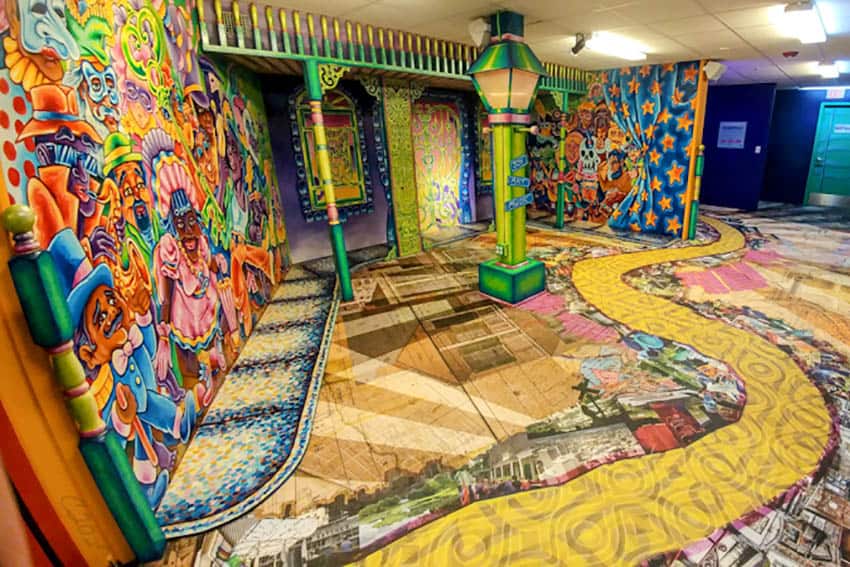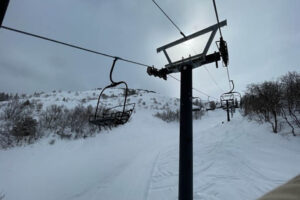
Guidebook To Haunted & Strange Places in Rhode Island & Surrounds
By Sierra Sumner
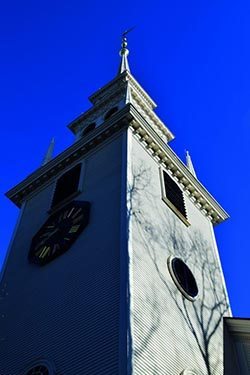
Put on comfortable shoes or boots to journey through 14 self-guided walking and biking tours of the strange and haunted locations across some lesser-known regions of Rhode Island. Tales of mythical monsters, ghosts, and spirits from a murder or two may greet you as you explore Providence, Newport, Jamestown, and surrounding areas.
Meet fabled half-deer, half-goat “doat,” a demonic dog that has been scaring visitors for centuries, and ghosts that may be slightly more welcoming.
Find out whether The Newport Tower is the true location of the lost Viking city of Norumbega, and visit the strange locations made famous by Rhode Island’s favorite son of horror fiction: H. P. Lovecraft. Nine maps will guide you along your route and historical backgrounds provide the backdrop for the supernatural. While this book title talks about haunted areas, there are just a few in the book and it’s more like a regular guidebook.
To date, no one taking these tours has died at the hands of a mysterious lurking creature, so you should be fine…
Here’s an excerpt from Haunted and Strange Places in Rhode Island and Surrounds:
The Providence of H. P. Lovecraft & His Fiction The Walking Tour: The Shunned House
135 Benefit Street
Famous author H.P. Lovecraft was a fan of the courtyards off Benefit Street where he would sit and read or enjoy some fresh air after a long day indoors.
Perhaps the small courtyard to the side of 135 Benefit Street, where his aunt Lillian Clark lived for a while according to S. T. Joshi’s More Annotated Lovecraft, was one of his favorites. Did Lovecraft sit there, looking at the peeling paint of the house and memorize the architectural details?
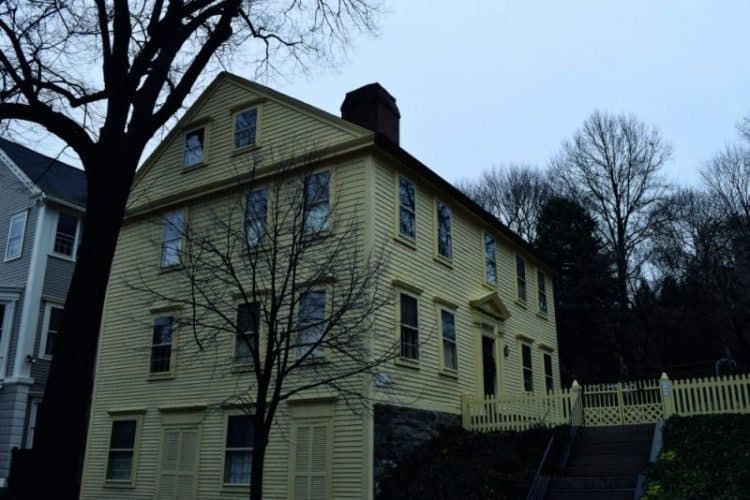
When he visited, did he wander around the different floors mentally placing characters and objects, then devise a fictitious history of its plot of land and structure? Did he put pen to paper and write the dimensions of the home in a notebook and make a sketch of the stairs leading to the small yard overlooking the street?
There is no better example of Lovecraft’s fondness for warping real history and lore in his works than “The Shunned House.” It is almost a macabre love letter to the neighborhood written by a native to be enjoyed by unsuspecting tourists who will be left confused at where the lines of reality blur into fiction.
The story follows Dr. Elihu Whipple and the unnamed protagonist as they become fascinated with the series of deaths that have haunted the house over the centuries…
Prudence Island: Where the “Doat” Once Roamed The Walking Tour: Sandy Point Lighthouse
Off Narragansett Avenue
Heading south is the oldest lighthouse in Rhode Island, built in 1823 on Goat Island farther down the bay, and likely the only property “owned” by the president of the United States that doesn’t require a check by the Secret Service to visit.

Since January 17, 1852, according to Lighthousefriends.com, the thirty-foot tall octagonal granite structure has been guiding ships and boats through the eastern passage between Prudence and Portsmouth. The wedge of sandy land that it sits on juts out into the bay and the white tower with its black, bird cage-like top, has been the subject of countless photographs.
On quiet days, visitors can admire the view and take pictures until they are content. On days when the water is rough and the skies are dark, visitors may be reminded of the deaths of several people in the very area they are walking on…
Caption:
Newport: Ghosts, Rum, and Mercenaries The Walking Tour: Trinity Church
141 Spring Street
The congregation was founded in 1698, but the building itself didn’t go up until 1726 and was influenced by churches that were common in Europe and especially England at the time.
The Sunday gatherings were a time for the members to catch up on news from other parts of the town and surrounding communities, making the need for the area surrounding the church to be open so people could mingle after service and not miss any of the good gossip.
Like many other New England churches, a small graveyard is on the grounds and visitors can often be seen walking amongst the tombstones and photographing the granite slabs and their inscriptions. Some people may be disappointed to learn that the church is not always opened to the public, but on the rare days that it is, a quiet stroll in the aisles is suggested. Much like the outside, the interior is simply adorned but a sight nonetheless.
Jamestown: The Lost City of Norumbega (?)The Walking Tour of Jamestown Fire Station and the Fire Museum
50 Narragansett Avenue
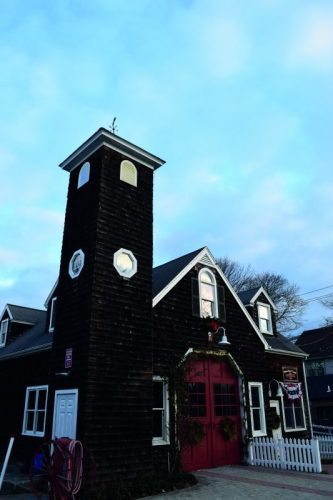
At 50 Narragansett Avenue, the Jamestown Fire Station crew quite frequently can be seen tending to their gear and equipment in their expansive driveway and parking lot. From checking hoses to inspecting one of their inflatable boats, the volunteer fire department that services the island appears to be just as professional and well-equipped as any of the neighboring fire departments with full-time, salaried staff.
During the summer months, the smaller, older firehouse on the same lot is opened to the public as a memorial and museum, while it’s a larger, more modern neighbor is charged with watching over the community.
The main showpieces in the museum are the retired fire trucks and carts that once helped extinguish fires on the island. The oldest one is an 1894 Lafrance Steamer apparatus that was horse-drawn over the hills and down the roads of Conanicut Island in the late nineteenth and early twentieth centuries.
The polished steam chamber used to produce pressure for the hoses and analog gauges are well kept and demonstrate how much has changed in the century-plus when compared to one of its diesel-powered, digitally read cousins next door. Two other retired engines in the museum exhibit the changes in automotive technology as well as firefighting techniques over the decades.
Roll-top desks and rotary phones decorate the office space where watchmen could be found twenty-four hours a day ready to answer any calls for assistance. The numerous photos of fires and flaming structures show that, while the island is quaint and residents relaxed, the job of firefighting is dangerous regardless of the community.
About the Author

Charles Harrington has been writing travel articles for over a decade, mostly focused on Japan where he lived for several years.
After graduating from Roger Williams University in Bristol, Rhode Island, he began teaching and writing, with numerous articles being published in Kansai Scene and Kansai Time Out magazines, including a feature retracing the footsteps of Ian Fleming’s famous spy in the novel You Only Live Twice. Charles Harrington has returned to the New England area where he continues to write about the odd and the fun.
- San Jose: A Lot More than Tech! - December 16, 2016
- Travel the Hidden Trails of Scotland - December 15, 2016
- New York City: Airbnb and a New Harsh Law for NY Rentals - December 8, 2016



